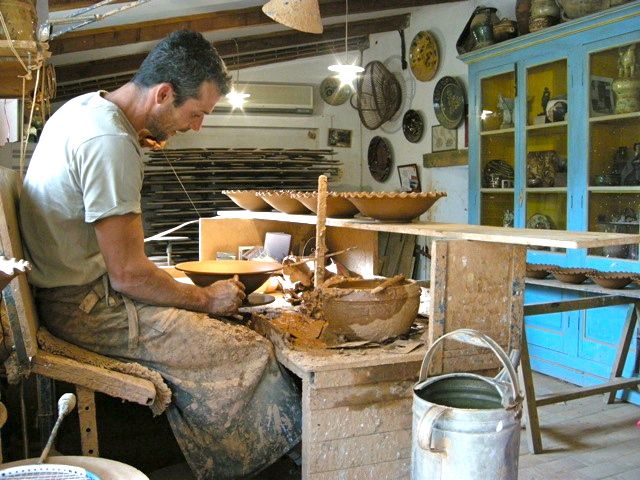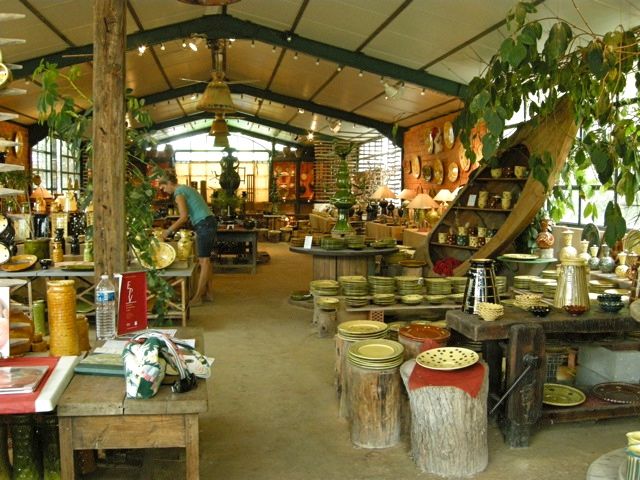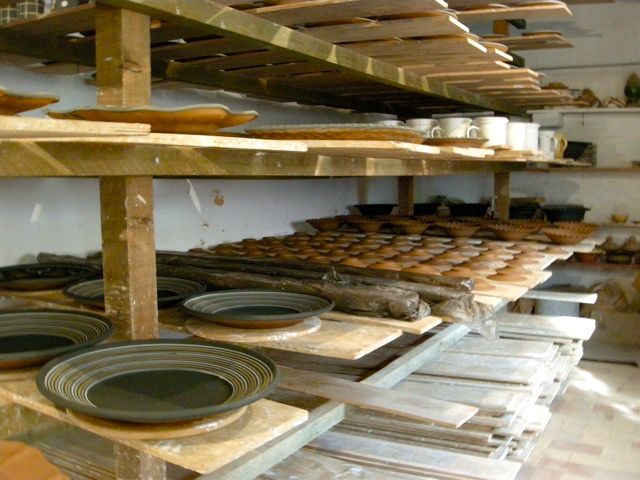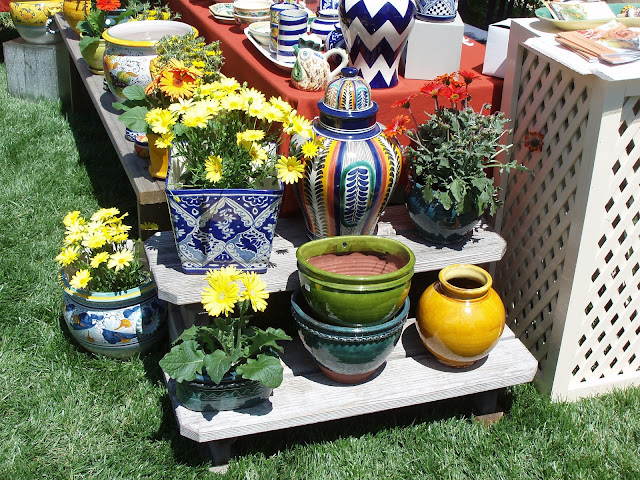One of my favorite parts about my four years with Emilia Ceramics has been developing a rapport with ceramic artists all around the world. In this series of posts, I’ll give some insights into what happens behind the scenes to make these beautiful hand-painted ceramics come to life.
I learned about Patrice Voelkel from a book on French ceramic artists that Sylvie Duriez loaned me many years ago. Since Patrice lived near where I was staying in St. Remy, I decided to check out his studio one rainy spring day. Thankfully it was clearly marked and easy to find – the French ceramics that covered the shelves are truly unique and unlike anything else in the Emilia Ceramics collection.
Patrice works with his wife Sylviane to create French ceramics with a modern sensibility that are deeply grounded in tradition. They use local black clay and create everything from design to finished product between just the two of them. Their dog Tina Turner keeps them company in their studio, known as Poterie Herbes Folles, which I think is named after the area’s wild and crazy grass. Patrice has worked with ceramics for over 33 years; he started making French ceramics near Lyon and then moved to the countryside and started Herbes Folles.
 The Voelkels glaze their pieces with a variety of liquid-like colors, but I especially love their marbled blue and celadon pieces, as well as those in a contemporary chalk white. (Patrice himself seems to love blue – every time I visit the workshop he’s wearing some kind of blue shirt!) Patrice and Sylviane’s French ceramics are often large, heavy, and make a serious statement. The rustic grittiness truly reflects the little farmhouse and workshop where they are made. On my last visit, I saw pieces drying in the afternoon sun while Patrice worked on the wheel and Sylviane prepared ceramics for their final firing.
The Voelkels glaze their pieces with a variety of liquid-like colors, but I especially love their marbled blue and celadon pieces, as well as those in a contemporary chalk white. (Patrice himself seems to love blue – every time I visit the workshop he’s wearing some kind of blue shirt!) Patrice and Sylviane’s French ceramics are often large, heavy, and make a serious statement. The rustic grittiness truly reflects the little farmhouse and workshop where they are made. On my last visit, I saw pieces drying in the afternoon sun while Patrice worked on the wheel and Sylviane prepared ceramics for their final firing.
I now have some new French ceramics by Patrice and Sylviane on the website. The one of a kind serving platter, rustic pitchers, and olive oil pitcher all in a rich indigo are ideal for bringing a bit of Provence to your home.
From spoon rests to prep bowls to serving platters, these French ceramics are stunning additions for any collection, reflecting so much of the people who made them with care and love. After working with Patrice for so long, I’m very happy I decided to take a detour in the rain all those springs ago.
























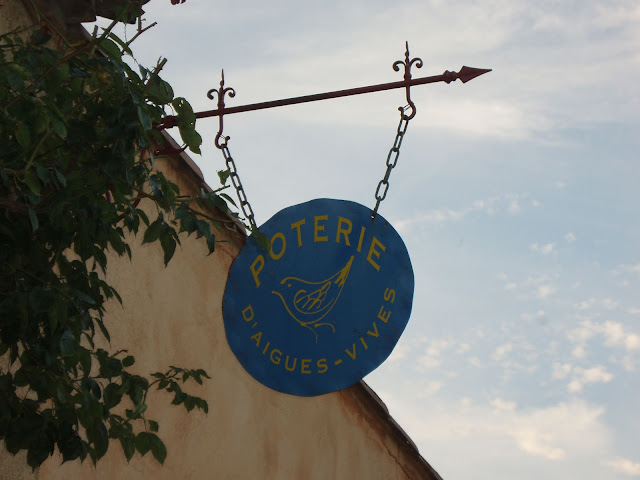
 The two old women owners at Foucard-Jourdan used their canes to crush ceramic pieces on the potters’ wheel that showed any sign of imperfection. Perhaps that’s where Richard learned his attention to detail and developed his appreciation for the slightly imperfect. I love the friendliness of his Aigues-Vives studio, with a tight team consisting of his two employees Arnaud and Katia, his wife Sylvie, and himself. The Esteban family also has three young children with whom I’ve shared several meals over the years, communicating in a mix of broken French and English.
The two old women owners at Foucard-Jourdan used their canes to crush ceramic pieces on the potters’ wheel that showed any sign of imperfection. Perhaps that’s where Richard learned his attention to detail and developed his appreciation for the slightly imperfect. I love the friendliness of his Aigues-Vives studio, with a tight team consisting of his two employees Arnaud and Katia, his wife Sylvie, and himself. The Esteban family also has three young children with whom I’ve shared several meals over the years, communicating in a mix of broken French and English.